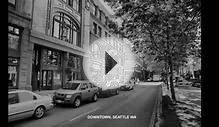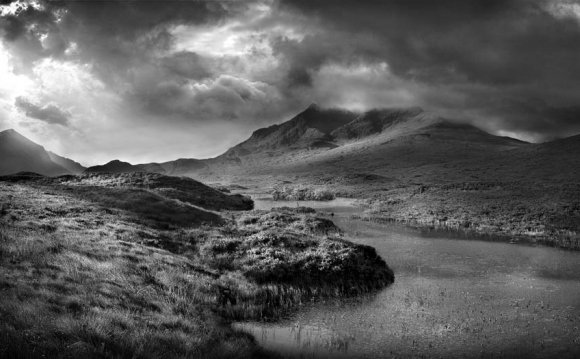
 In this black and white photography tutorial, we’ll show you how to choose your subjects, set up your camera and how simple but effective adjustments in Photoshop can make your images stand out.
In this black and white photography tutorial, we’ll show you how to choose your subjects, set up your camera and how simple but effective adjustments in Photoshop can make your images stand out.
Converting an image to black and white is pretty simple, but if you want truly impressive results it pays to think about how and what you shoot, and learn how to use your photo editing software’s powerful tools to get the most from your shots.
Along with our best black and white photography tips, we’ll reveal how to get creative with high-contrast graphic compositions and create moody landscapes, and show you how dramatic high- and low-key effects can be used to transform your still life photography and portrait photography.
How to see in black and white
When it comes to black-and-white imagery, being able to ‘see’ how your final shot will look is a key skill. It’s important to understand how the colour image you see through your camera’s viewfinder will translate into a monochrome image. To get the best results, you have to look beyond the colours, and instead try to visualise how a shot’s shapes, textures and tones will be recorded.
The success of your black-and-white shots relies on several different factors, but the main thing to look out for is a main subject that will appear in a significantly different shade of grey to the background. Then look out for subtleties of tone and texture that will add depth to your images.
It’s tempting to think that white balance doesn’t matter if you’re going to remove the colour, but because the success of any conversion relies on successfully translating colours into attractive tones, it’s important to capture an image without any colour casts.
Recognising potential shots when out in the field can take practice, so why not try converting some of your existing images to black and white to get a better feel for what will work (for more, see Black and white landscapes: make a mono masterpiece)?
READ MORE: 77 photography techniques, tips and tricks for taking pictures of anything
Good subjects for black and white photography
 When you use photo-editing software to remove the colour from an image you instantly lose one element that the viewer relies on to interpret the scene. So other elements become even more important for successful black and white images.
When you use photo-editing software to remove the colour from an image you instantly lose one element that the viewer relies on to interpret the scene. So other elements become even more important for successful black and white images.
Here’s a run-down of the most common elements that you should look for when identifying a suitable subject for the black-and-white treatment. Remember that these elements can be used individually, or even combined to produce marvellous mono images with clout.
1 Contrast, shape & form
One of the fundamental aspects of black and white photography is that your whole composition relies on contrast (for on composing images, see our 10 rules of photo composition – and why they work). For this reason, look out for subjects that feature simple, strong lines and shapes. It’s often the shadows that define shape and form, so pay attention to areas of darkness, as well as light.
2 Tone
Black and white photos actually include a whole range of greys, which add subtlety to your images. Normally, you look for subjects that will translate into a range of tones from black to white, but you can also get great results where the subject is mostly light (high-key) or dark (low-key).
SEE MORE: Breaking bad photo habits: 10 classic blunders and easy ways to improv
3 Texture and detail
Fine detail, or strong textures such as weather-beaten stone, foliage or clouds, can help to give your black-and-white shots depth and interest. Strong side lighting is perfect for bringing out the texture in any subject. You
can use strong natural light, or get creative with flash to create sidelighting on the subject.
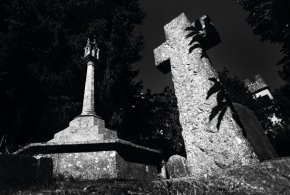
4 Graphic composition
Black-and-white images need strong compositions to really work. Keep an eye out for strong lines or features in your scene that can be used as leading lines, or positioned diagonally across the frame to create dynamic images.
SEE MORE: Better photo tips: 60 of the most amazing, surprising, incredible bits of advice you’ll ever read
Bad subjects for black and white photography
There’s no absolute right or wrong when it comes to choosing a subject for black and white photography, but you’ll come across subjects and scenes that rely on colour for their impact, and also lighting conditions that don’t work well in monochrome.
Here are some examples of what to avoid when looking for suitable subjects for black and white photography.
Bland skies
It’s easy to think that because you don’t need bright colours you can shoot black and white photography in any light or in any weather.
It’s certainly true that with some skillful conversion and adjustment in Photoshop post-shoot you can add drama, but the sturdier the building blocks the better your finished image will be (find out How to fix bleached skies in Photoshop).
So, unless you’re trying to create a minimalist image it’s worth taking the time to capture maximum detail in the best lighting conditions possible.
2 Safeguarding mood
If the scene you’re shooting relies on colour for mood or impact, chances are you’ll be better off keeping the image in colour, as in our mushroom image above. Sunrise or sunset shots are another good example; you should always ask yourself whether the image loses some impact without the subtle hues.
3 Colour contrasts
Subjects that rely on contrasting colours – such as a purple crocus against a green lawn – generally don’t work well in black and white. This is because the two colours will end up looking similar in tone when converted.
READ MORE
Master your autofocus: which AF points to use and when to use them
Best camera focus techniques: 10 surefire ways to get sharp photos
10 things photographers can do to stop wasting pictures
11 common lens errors (and how to stop making them)
Using graphic compositions in your black and white photography
Simple shapes and a strong composition virtually guarantee striking black-and-white images. With their straight lines and dramatic angles, man-made structures are ideal for this type of shot, although for more organic shapes you can also try working with trees, rocks or foliage.
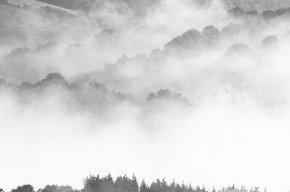

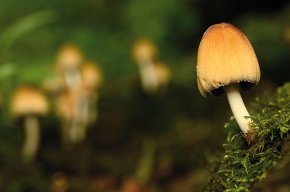
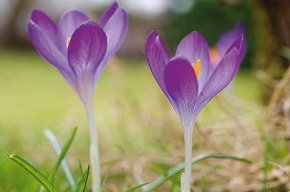
YOU MIGHT ALSO LIKE


